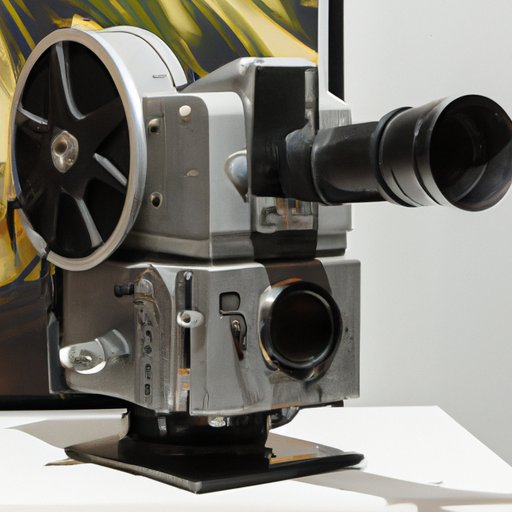Introduction
A video camera is a device that records visual images and converts them into electronic signals for storage or transmission. It is used mainly for recording movies and television programs, but can also be used for surveillance and other purposes. But when was the video camera invented? In this article, we’ll explore the timeline of the video camera, from its invention to its evolution into digital cameras and its impact on media production.

Tracing the Origins of the Video Camera: A Look at When It Was Invented
The history of the video camera dates back to the late 1800s. The earliest attempts to create a video camera were made by German engineer Paul Nipkow in 1884. He developed an electromechanical system known as the Nipkow disk, which was capable of scanning images and transmitting them through wires. However, the system was inefficient and unreliable, and his invention was never commercialized.
It wasn’t until the 1930s that the first successful video camera was invented. This was the Iconoscope, created by Russian-born inventor Vladimir Zworykin. The Iconoscope was a tube-based camera that could capture and transmit images electronically. It was quickly adopted by television networks and became the standard for television production.

Examining the History of Video Cameras: How and When They Were Developed
In the 1950s, advances in technology led to the creation of more sophisticated video cameras. These cameras were able to capture higher-quality images and had better sensitivity in low light conditions. As a result, they were widely used in film and television production.
In the 1970s, new technologies such as charge-coupled devices (CCDs) and digital signal processing (DSP) allowed for further improvements in video camera technology. CCDs improved image resolution, while DSP enabled more efficient processing of video signals. These advances allowed for the development of smaller, more portable video cameras that could be used for news reporting and other applications.
The Revolutionary Invention of the Video Camera: Its Timeline and Impact
In the 1980s and 1990s, the emergence of digital video cameras revolutionized the industry. Digital cameras offered higher image quality and greater flexibility than their analog counterparts. They also allowed for easier editing and manipulation of footage, making them ideal for professional video production.
The introduction of digital video cameras had a profound impact on media production. They allowed filmmakers and television producers to create more visually stunning and complex productions, and their portability made them ideal for capturing live events. Today, digital video cameras are used in all aspects of media production, from feature films to television shows to music videos.
An Overview of the Development of the Video Camera: From Idea to Reality
The development of the video camera has been driven by advances in technology and innovation. Over the years, engineers have designed increasingly powerful cameras with improved features and capabilities. New technologies such as ultra-high-definition (UHD) and virtual reality (VR) have opened up even more possibilities for video production.
Innovation has also played a key role in the development of the video camera. Companies such as Sony, Canon, and Panasonic have released cutting-edge cameras that offer unprecedented levels of performance and features. These cameras are used by professionals in all areas of media production, from filmmaking to broadcast television.

Rewinding Through Time: A Look at When the First Video Camera Was Invented
The first successful video camera was invented in the 1930s by Russian-born inventor Vladimir Zworykin. His invention, the Iconoscope, was quickly adopted by television networks and became the standard for television production. Since then, advances in technology and innovation have led to the development of more powerful and sophisticated video cameras.
The introduction of digital video cameras in the 1980s and 1990s revolutionized the industry. These cameras allowed for easier editing and manipulation of footage, making them ideal for professional video production. Today, digital video cameras are used in all aspects of media production, from feature films to television shows to music videos.
Conclusion
The video camera has come a long way since it was first invented in the 1930s. Advances in technology and innovation have led to the development of more powerful and sophisticated cameras, allowing for more visually stunning and complex productions. While the video camera may have started as a simple idea, it has evolved into a revolutionary tool for media production.
The invention of the video camera has had a profound impact on media production, allowing filmmakers and television producers to create more visually stunning and complex works. It has also opened up new possibilities for live broadcasting and streaming, making it easier than ever to share content with the world.
(Note: Is this article not meeting your expectations? Do you have knowledge or insights to share? Unlock new opportunities and expand your reach by joining our authors team. Click Registration to join us and share your expertise with our readers.)
